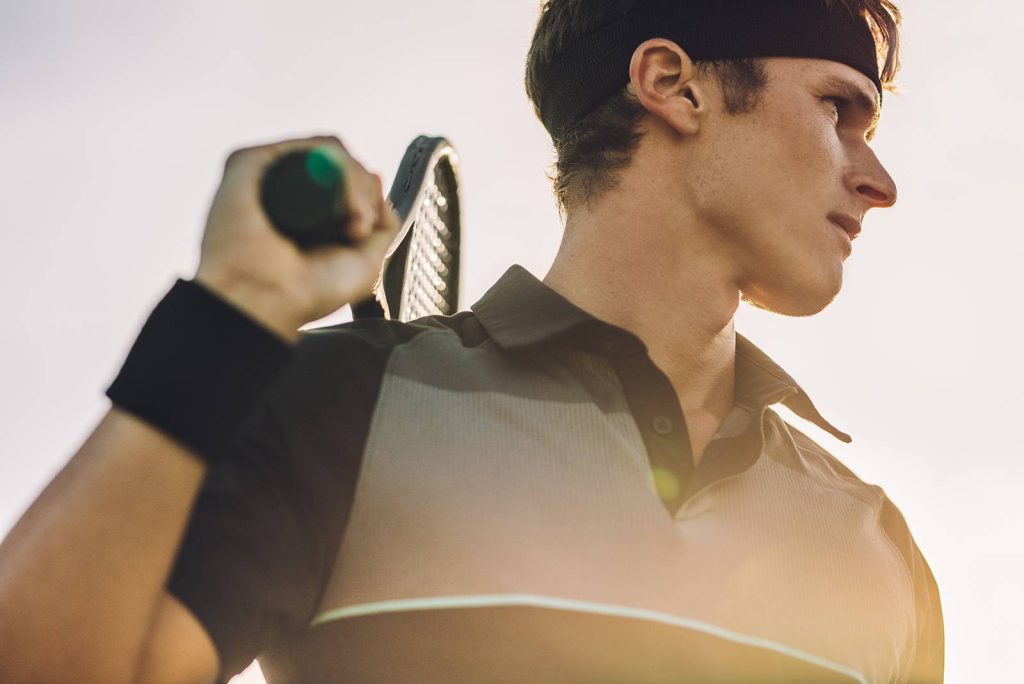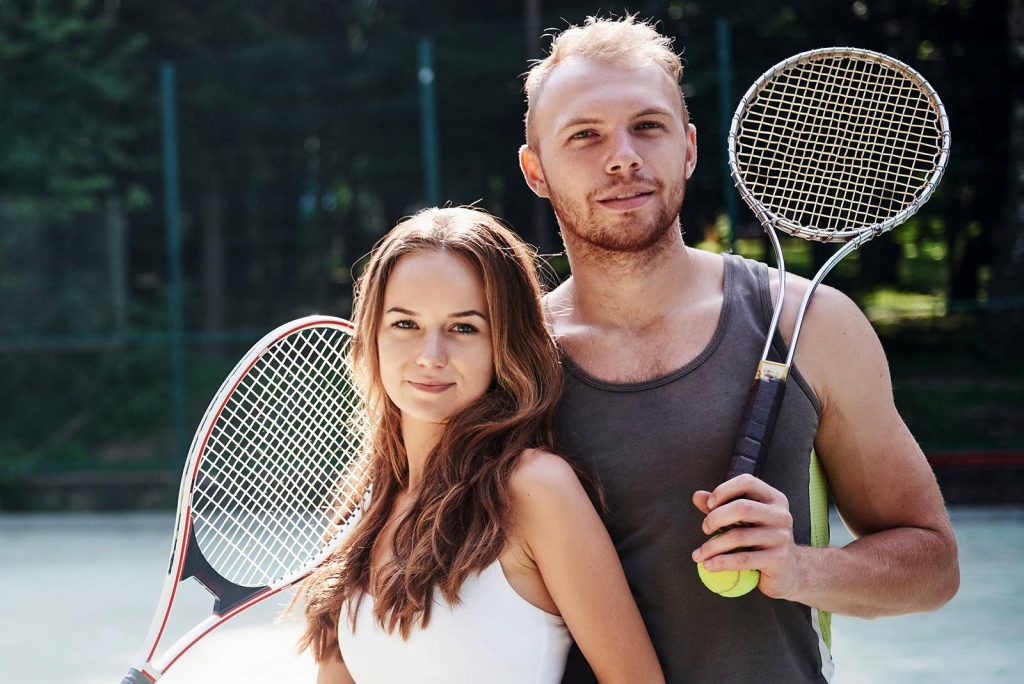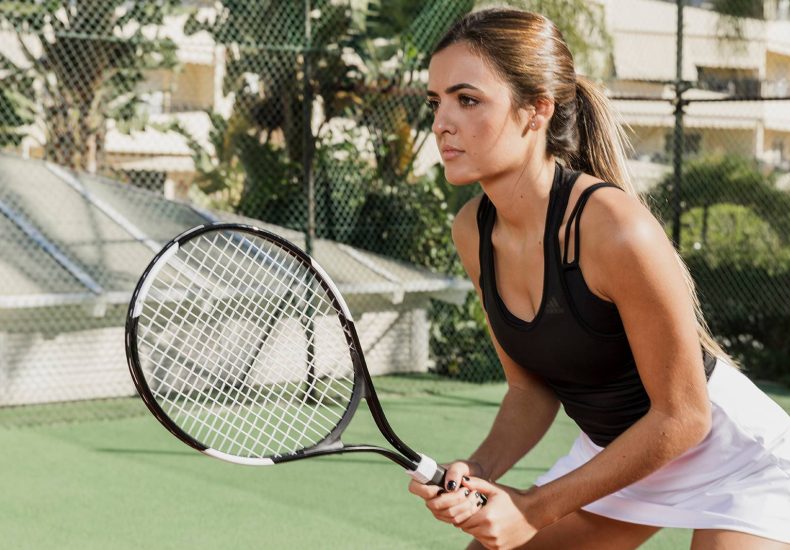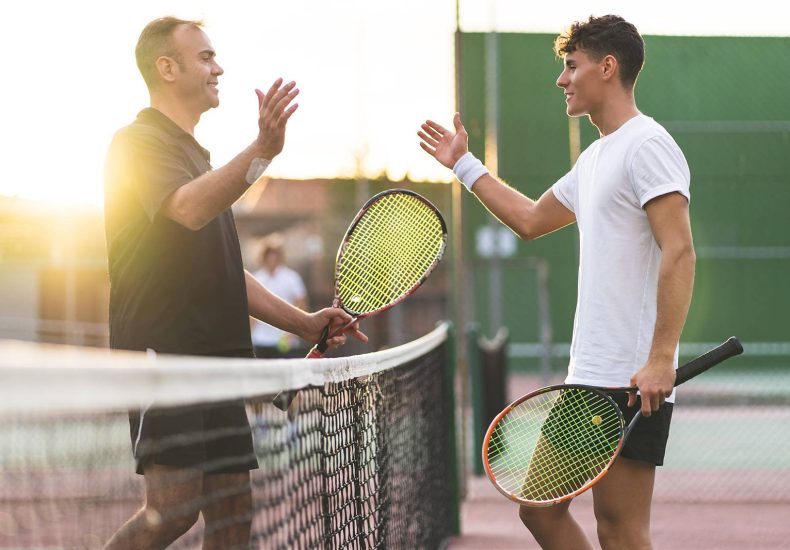6/10 tactic vs 9/10 tactic. Which one is better?
Let us say you have to choose between two tactics of play. The first one, Tactic A, involves playing closer to the lines, assuming more risk. If played successfully, this tactic allows you to gain control over the rallies, building up points and unless your opponent is a defensive specialist with incredible stamina and speed you will be able to close up most of the points in 2 to 4 shots. As an estimate, 60 % or 6 out of 10 shots with ‘’calculated risk‘‘ played successfully in Zone A are required.
The second tactic, Tactic B, involves playing ‘’safe’’, assuming less risk, which should theoretically mean less mistakes are made. Using this tactic, control is usually given to the opponent which may or may not profit from it. Because you are not really ‘’pushing’’ your opponent, he will also make less mistakes. In this case, your ‘’quote’’ needs to be around 90 %, or 9 out of 10 shots in order to win.
Even still, because you give control of the point to your opponent, if he applies Tactic A successfully, he will beat you. Usually, when this happens, I will hear from my players:
‘I played well, but he was just better. ‘
‘ He played unbelievable, I couldn’t do anything. ‘
The question I then ask is:
This is all fine but think about this, someone who would have beaten your opponent TODAY, how would he have HAD TO PLAY? Which tactic would he have chosen? What Quote would he have needed?
This is what junior players aiming to go pro need to learn, risk is necesary (and I mean calculated risk, in the right situation, or having the courage to ‘go for it’) , in order to raise your potential, in order to ultimately beat the better opponents. You will not get better after a certain point by playing safe. Progress means getting out of your comfort zone.
Tennis is a perfect combination of violent action taking place in an atmosphere of total tranquility.
Billie Jean King
How to start your tennis match
Deal with nervousness. Accept your emotions. Be forgiving with yourself. ‘’Allow’’ mistakes to happen. Have patience in the first few games (usually 3 or 4).
We so often hear from parents or even coaches tell their players :‘’Try to stay calm’’; ‘’Be relaxed.’’ ;‘’Play like in practice.’’; ‘’It’s just a game.’’ Well.. it’s not just a game now is it? The parent doesn’t believe it, the coach doesn’t believe it then why would the player believe it? They know what is at stake. The energy invested, the time, the money, the hard work. Of course you are going to feel nervous. It’s completely normal. IT MEANS YOU CARE. Now, having the tools to deal with this nervousness is another story.
One of the things I miss the most, when going months without competing (in Club matches or Local tournaments) is that certain thrill. That emotion. That gut feeling you get before you step on court, at the beginning of the match. That is exciting. That is even a reason, for some, for stepping up to compete. But that feeling is not always pleasant. Trust me, it would be much worse if you don’t feel it. As a player, and I am sure many can relate, I used to hate that gut feeling, even tryed to repress it, hide from it. So how do we deal with it? First you should accept the way you feel. It is normal. That is why you are there. If you don’t want to feel it, just stay home, it’s that simple. Expect to be nervous, allow yourself to feel that way. Accept you will not be playing your best tennis in the first few games. Be forgiving with your mistakes. Control your reactions. Know that your opponent feels exactly the same. Look for your rhytm. Read your opponent’s playing patterns. Look for your shots, build up your game, STAY IN THE MOMENT, and without noticing it, after a while, it starts to come together. You start feeling better, comfortable, accustomed to the conditions. YOU ADAPT. That is when you fire up. That is when you go. Use positive self-talk. Start showing positive reactions. Show mental toughness. Who knows, you might even pick up a win once in a while.

Things you didn’t know about Tennis
- Boosts metabolism
- Gives energy
- Makes you more active
- Relieves fatigue
Fabpatcoaching method
A master coach will provide more than tennis lessons. The full package offered to players seeking to reach their potential:
1. Technical + Tactical Training.
+building habbits (warm-up/cooldown routines, etc.) : The two minds. The goal of training must be to build routines and habbits which will be put to use in matches. The goal of the training is NOT performance. Effort attitude and coachability will be appreciated.
2. Mental coaching.
Work is done especially on the mindset of the athlete. Becoming responsible. Expecting and taking feedback into account. Accountability. Understanding and using the Inner Game.
+building confidence, tournament travel and analysis of play, analysis of opponents, mindset.
3. Fitness.
A fitness schedule will be developed according to the athlete’s needs and willingness to work.
Self – responsible (3-5 times/week) – stretching, bands, insanity program, athletic dev. Program.
4. Periodisation.
Individualised training plan, fitness plan. Working together as a team – giving and receiving feedback with the ultimate goal of reaching peak performance in tournaments and improving potential. Injury and burnout prevention.
5. Annual Plan.
-Goals. Training. Rest period. Tournaments.

My Method
Focus on controlables. Build positive Habits.
Body Language and self talk rituals- improvement-Control your reactions.
I would describe my philosophy as being detail-oriented, focusing on building the right habits, on and off the court.
As the main motivator behind my desire to coach, I would describe myself as being driven by passion, trying to instill proper values and desire to play the game.
Fundamentals:
Athletic development. On court. Wide and low position. Ready position. Activate big muscles (back, core, legs-oberschenkel)
Movement: side-steps. Cross step- power step. Sliding on clay. Stoping with small steps on hard surfaces. Balance while running forward.
Stances: Closed, semi-open, open.
Shot preparation. Split-step. Upper body open and turn with racquet behind, legs positioning, weight balancing in shot on front leg, swing with loop and finish.
Recovery. Cross step- side step to middle.
Inner Game of Tennis: no judgement-method: tips: try to notice where your racquet head is… focus on going through the ball and finishing way in front of the body…
focus on the finish and not on the contact point…
The flashlight. The two minds. Active mind and inner mind. Build habits.
Self-aware method: One-two exercise: one-takeback; two-hit. (to improve timing)
Forehand: Let the wrist fly at the end (Handgelenk fliegen lassen).
Tournament/match: build the right mental habbits in match! : what to focus on at the start-warm-up routines, first few games, watching the ball, attention focus.
important points: play simple. what to think. what to focus on. self-talk, motivation. Forgiveness/next point.
Master of Tennis: I want to relate my answer here to the Wimbledon juniors I saw playing earlier this year. The differences at this age are seen not so much physically,
but cognitively and at the emotional level. I would focus at this age on coaching mental skills, abilities which help control emotions while under pressure and in a match situation.
Taking responsibility on-court, control over reactions (especially after losing a point) thinking habits, focusing the active mind on what is important,
keeping it in the present moment. * this is a big part of my coaching method: building habits in practice not only technically and physically but also mentally.
Toughest part: applying it in a match situation. I find coaching (in match-habits) to be key to my success as a coach.
I use triggers: keeping the active mind in the present moment.









Camille Schowalter
Aspernatur sint odio rerum expedita id ex sed. Accusantium et aut commodi amet accusantium. Esse eveniet dolores voluptas et at id sed. Doloremque corrupti eos est tempore qui.
Iure iure repellendus quibusdam laboriosam qui omnis accusantium. Numquam quia earum nihil aut ipsa. Nihil nihil assumenda velit quia nulla quia.
Dicta id veniam aut earum pariatur voluptatibus aut. Molestiae aperiam qui aut dolor laudantium animi. Dolores quis vitae omnis quos sunt vero. Qui exercitationem et ipsam expedita est illum.
Stefanie Rashford
Aliquam massa ex, accumsan eget magna nec, aliquam porttitor lacus. Morbi lacinia felis sit amet ex viverra, id posuere velit molestie. Suspendisse rutrum nunc quis commodo condimentum.